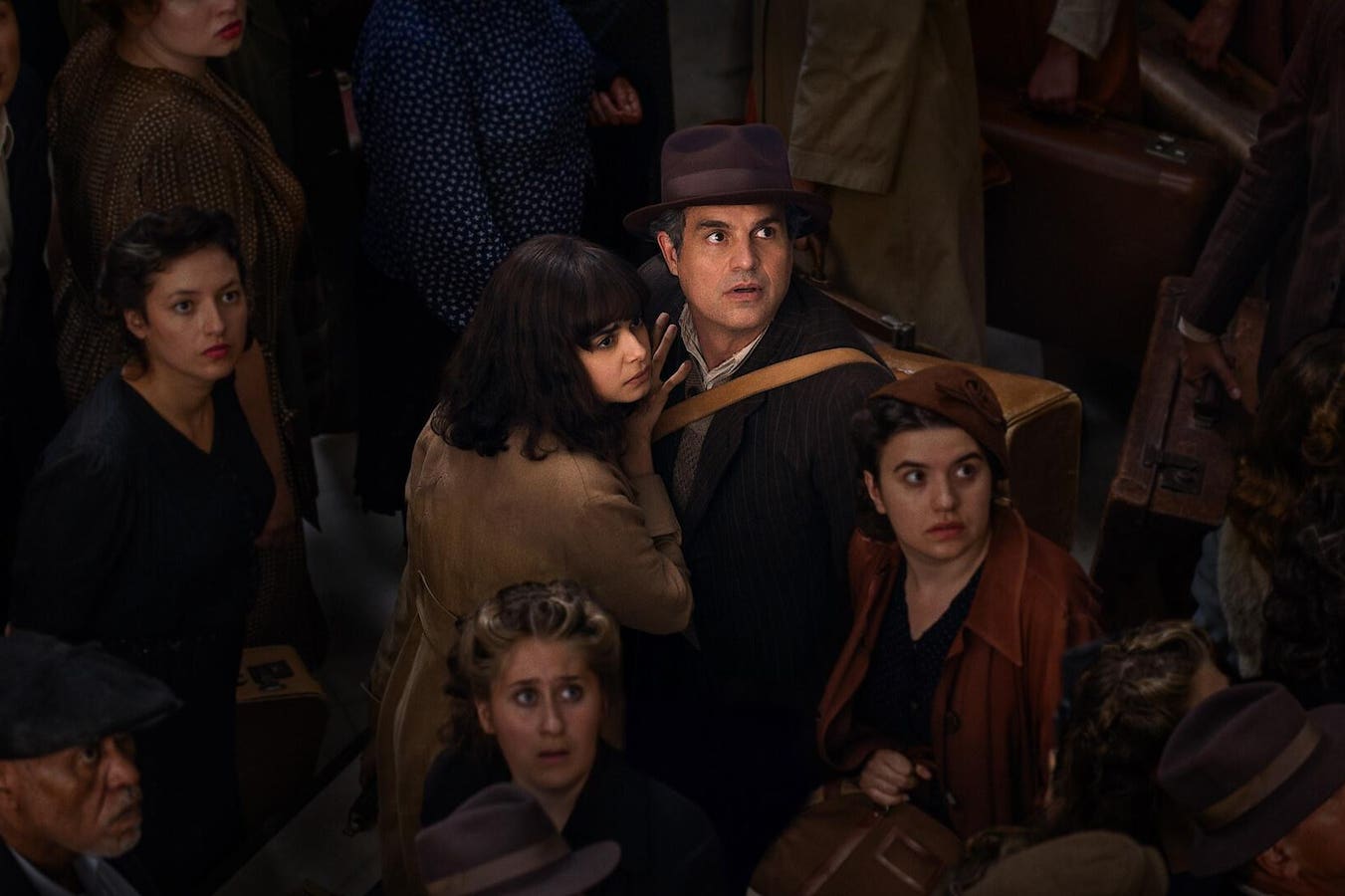The wartime drama All The Light We Cannot See is currently the No.1 show in the U.S. on Netflix. The show’s World War II backdrop has sparked curiosity among viewers about the truth of the events that Marie-Laure and others experience throughout the series.
Directed by Shawn Levy, the adaptation is based on Anthony Doerr’s Pulitzer Prize-winning novel of the same name. The limited series follows Marie-Laure (Aria Mia Loberti), a young blind French girl, and her father, Daniel LeBlanc (Mark Ruffalo), as they escape occupied Paris while guarding a legendary diamond they cannot let fall in the hands of the Nazis.
The father and daughter seek shelter in their relative’s home in Saint-Malo. Uncle Etienne (Hugh Laurie) plays a key role in transmitting covert radio broadcasts as part of the resistance effort. Meanwhile, Werner Pfennig (Louis Hofmann), a German orphan and radio technician, is enlisted by the Nazis to track down Marie-Laure and illegal broadcasts. When Werner and Marie-Laurie cross paths, the two share a special connection.
“I always felt that this book, and hopefully this show, is this construct of inexorable intersection of destiny, that they’re slowly coming together,” Levy told Netflix’s
NFLX
Is All The Light We Cannot See based on a true story?
Is All The Light We Cannot See based on a true story? The answer is no. The limited series, based on Anthony Doerr’s book, is historical fiction set during World War II. While Marie-Laure, Werner and other characters are not real, the author used the backdrop of the 1944 siege and battle for control of Saint-Malo in in Brittany, France, which really did happen.
“It was really important to me to try to make sure every little detail of Saint-Malo was right,” Doerr told Tudum, “so that somebody who lived through that siege would be persuaded that the verisimilitude of this project was real.”
What inspired the plot for All The Light We Cannot See?
What inspired the plot for All The Light We Cannot See? Although he book’s plot had been developing in Doerr’s mind for a decade, he found inspiration to write the novel during a ride on a New York City subway car. He observed a man losing his cell phone connection in a tunnel and the man became visibly upset.
“And I remember thinking that’s not right,” Doerr explained to Boise State Public Radio News in 2014. “He’s forgetting, and we all forget all the time what a miracle it is to carry this little receiver and transmitter in our pocket that can talk to people in Australia or Madagascar or Thailand.”
He said that the radio is a big part of the story “both for good and for evil.” “In the way nationalism was hammered into the minds of these young, poor orphans in Werner’s life. And the way that radio is used in Marie’s life both to literally liberate her and also to teach her about the world,” he added.
However, there are a few changes that Levy made to the Netflix series that readers will notice. “Fans of the book know that the last 50 pages have a few deeply traumatic, horrific occurrences that happen to characters we love,” Levy also told Tudum. “I remember reading the book, and it killed me. It really hurt me.”
Without revealing major spoilers, the filmmakers decided to end the story with some hope for viewers. Additionally, Levy decided to amplify relationships in the series version, like with Etienne and Marie and Etienne and Werner.
“That’s a relationship that doesn’t exist in the book, but it’s one that Steven Knight [the show’s writer] crafted because his feeling was Etienne is haunted by the trauma of World War I,” Levy added.
He continued, “Werner is haunted by the trauma of World War II. The storyline naturally brings them together. Why would we not explore the similarities of struggles and hauntedness between these two characters, especially if you got Hugh Laurie playing one of them and you got Louis Hofmann playing the other — you better believe I want to see these powerhouses together.”
All The Light We Cannot See is available to stream on Netflix.
Read the full article here





